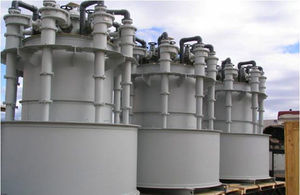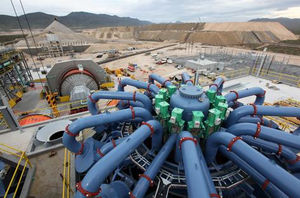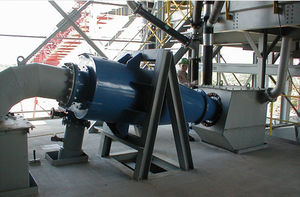
Desanding hydrocyclone
Add to favorites
Compare this product
Characteristics
- Options
- desanding
Description
Sand-laden fluid is fed into the cylindrical chamber where it is subjected to the vortex action resulting from its tangential entry. As the produced water spirals inward towards the vortex finder extremely high centrifugal forces move the sand toward the cylinder wall. Sand particles then progress in a spiral path toward the apex of the cone and are finally discharged through a tangential orifice into the accumulator tank.
The specially designed feed entry aids in pre-classifying sand before entering the cylindrical section. This causes the sand particles to enter the cylinder with a very smooth flow pattern along the wall thus minimizing solids-induced turbulence and the familiar richochet action found in conventionally fed cyclones. Energy is, therefore, converted to centrifugal rather than wasted on turbulent forces that can upset the vortex action and intensify wear on the internal surfaces of the unit.
Tangential discharging of the separated sand at the apex of the cone section is another feature of FLSmidth's Krebs DeSander. Very little energy of the produced water in the cone section is transferred to the accumulator tank contents with this arrangement and cyclonic swirl in the tank is eliminated. Absence of violent motion in the tank permits the retention of virtually all the sand discharged into it and prevents abrasive wear.
Catalogs
No catalogs are available for this product.
See all of KREBS ENGINEERS‘s catalogs*Prices are pre-tax. They exclude delivery charges and customs duties and do not include additional charges for installation or activation options. Prices are indicative only and may vary by country, with changes to the cost of raw materials and exchange rates.






